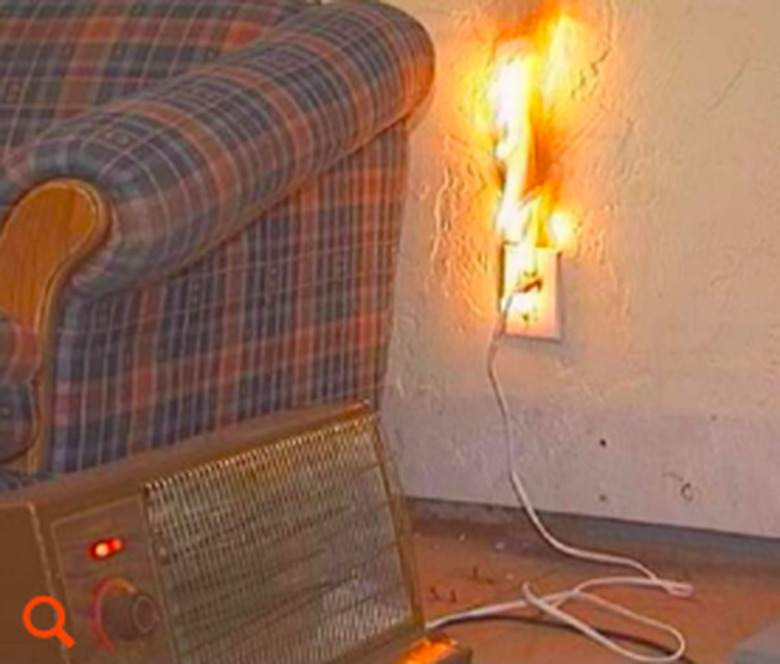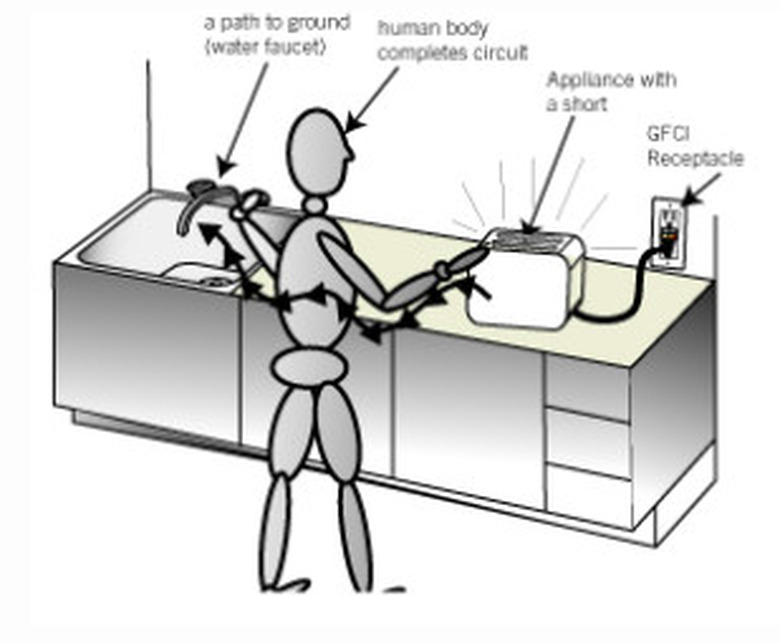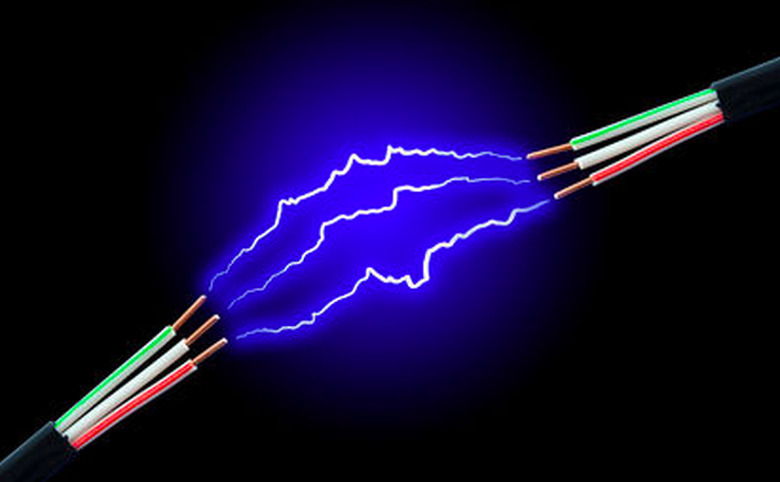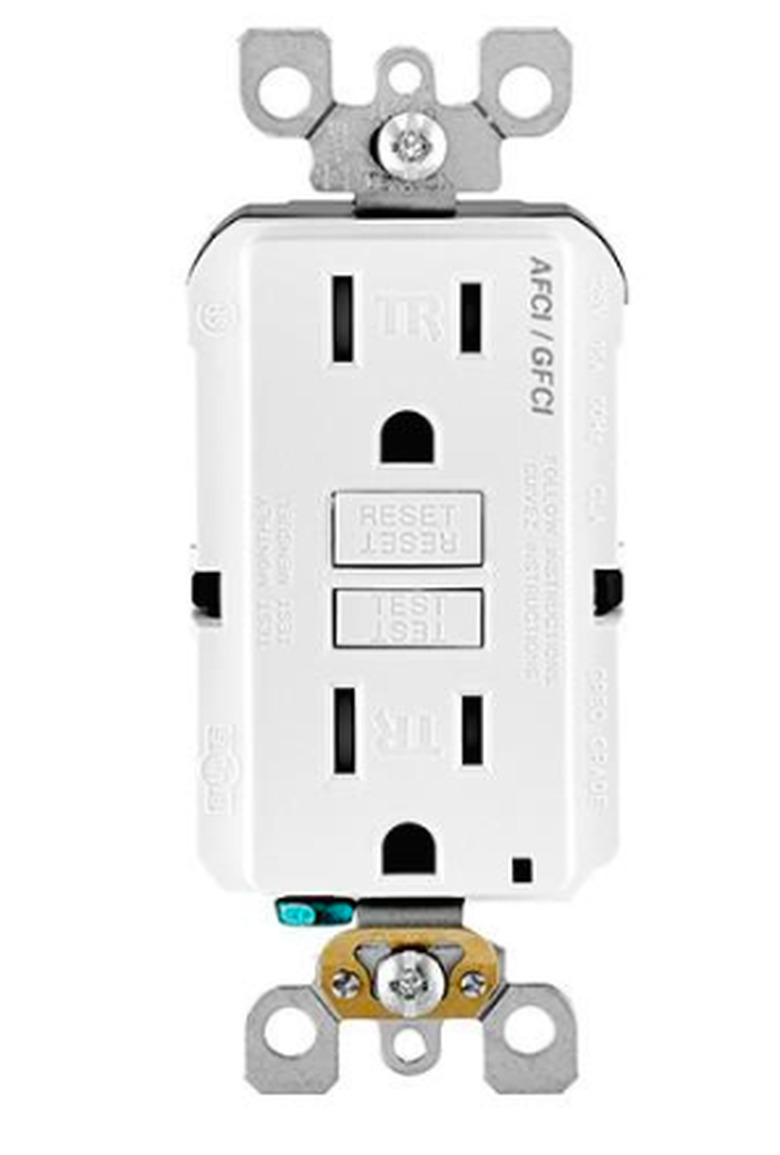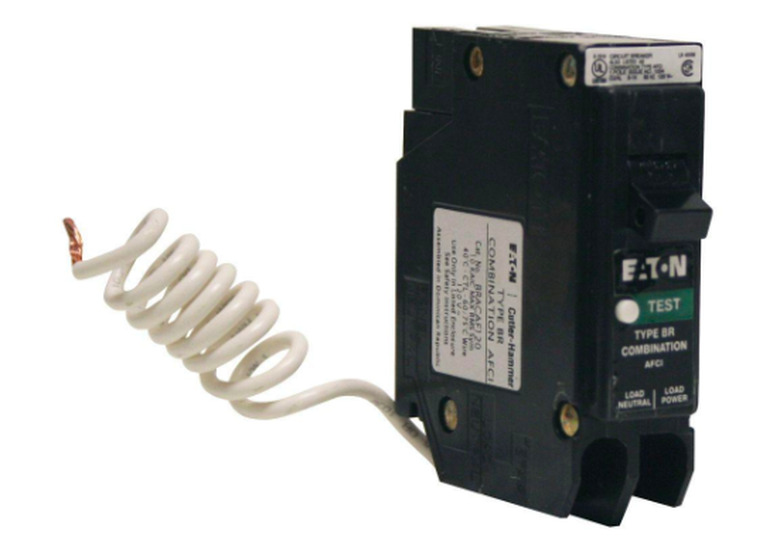What Is An AFCI (Arc-Fault Circuit Interrupter)?
The term AFCI is an acronym that stands for arc-fault circuit interrupter, and is applied to a certain type of circuit breaker or outlet receptacle that aims at preventing sparking, or arcing, that can potentially cause an electrical fire.
Electrical fires are not a rarity. In 2006, the United Sates Fire Administration reported that residential electrical systems were responsible over 67 thousand fires annually, causing 2,300 injuries, 480 deaths and more than $868 million in property damage. Arcing from loose or faulty electrical connections at outlets, light fixtures, and appliances is one of the main causes of such fires, and arc-fault circuit interrupters (AFCIs) are designed to prevent them. The 2017 version of the National Electrical Code (NEC) requires AFCI protection in virtually every room in the house when you build or remodel, but it does not require that existing circuits be retrofitted with AFCI protection unless updates or repairs are being made.
AFCI Circuit Breakers and Receptacles
AFCI Circuit Breakers and Receptacles
AFCI protection is typically offered by one of two devices: an AFCI circuit breaker, or an AFCI receptacle. Both devices are designed so they detect the tiny voltage variations that occur during sparking, or arcing, and shut off the current to the circuit before the arcs can create sufficient heat to cause a fire.
AFCI protection is most commonly provided by an AFCI circuit breaker that protects all outlets and fixtures on the circuit. In new construction, nearly all [circuit breakers](https://www.hunker.com/13710397/circuit-breakers-and-how-to-use-them Save Cancel) installed will be of the AFCI type. And during routine updates to an older electrical service, professional electricians now routinely replace standard circuit breakers with AFCI breakers.
Where AFCI circuit breakers are not practical, special AFCI outlet receptacles can also be installed. These receptacles can be installed so AFCI protection is offered for only one outlet location, or they can be wired so they also protect outlets that are "downstream" of the outlet location. In this regard, they are similar to GFCI receptacles.
It is important to understand, though, that AFCIs do NOT replace GFCIs. These two devices offer different kinds of protection to a circuit, and the NEC often requires both types of protection.
AFCIs and GFCIs: Why You Need Both
AFCIs and GFCIs: Why You Need Both
Most homeowners are more familiar with ground-fault circuit interrupters (GFCIs) than they are with AFCIs. GFCIs have been around since 1971. The NEC originally required them only in outdoor locations but over the years expanded the requirements to include bathrooms, kitchens, laundry rooms and other locations where water is likely to be present. The code requirements for AFCIs, which were last updated in 2017, are in addition to those for GFCIs, because the two types of detectors work differently.
In a ground fault, electricity essentially "jumps out" of the circuit and flows to ground through an exposed wire or uncovered connection. When this happens, a circuit suddenly loses a great deal of its resistance, which allows a substantial amount of current to flow. A person holding an appliance or wire through which this stray electricity is flowing can get a shock, especially when in contact with water. To prevent this, a GFCI monitors electricity flowing along the return path of a circuit and shuts off the power when it detects a shift in current flow. A GFCI, therefore, is intended to provide protection against electrical shock. It shuts down the circuit so fast that shock cannot occur.
An arc fault occurs when electricity jumps the gap between two loose connections or from one uncovered wire to another. Like lightning flowing between clouds, an electric arc produces sparks and a lot of heat. It sometimes involves stray electricity flowing to ground, but when it doesn't, a GFCI can't detect it. The technology in AFCIs involves monitoring the characteristics of current strength and waveforms and noting telltale signs of arcing electricity, such as voltage spikes and production of flat or square waves in the electric signal. An AFCI detector must be able to distinguish unusual arcing from that which normally occurs in electrical motors and appliances.
In contrast to a GFCI, which serves to protect against shock, an AFCI serves to protect against fire. For this reason, the NEC requires both GFCI and AFCI protection for prescribed locations.
Where Do I Need AFCIs?
Where Do I Need AFCIs?
The requirements for AFCIs specified in the 2017 edition of the National Electrical Code have been adopted by 48 states. According to the code, AFCIs are required in all 15- and 20-amp, 120-volt circuits in the following rooms in all residential dwellings:
- Kitchens
- Family rooms
- Dining rooms
- Living rooms
- Parlors
- Libraries
- Dens
- Bedrooms
- Sunrooms
- Recreation rooms
- Closets
- Hallways
- Laundry areas
In short, as of the 2017 edition of the NEC, AFCIs are required everywhere except the bathroom, the basement and outdoors. It is unclear why the bathroom is exempt from the requirement, although some experts believe it is because bathroom vent fans make AFCIs susceptible to phantom tripping. The steady trend has been toward requiring AFCI protection in more areas of the home, so subsequent revisions to the Code may expand these requirements.
Do I Have to Replace All My Receptacles?
Do I Have to Replace All My Receptacles?
The Code does not require homeowners to change their existing outlets or circuit breakers. However, when you update wiring or have repairs made, you must provide AFCI protection wherever the Code requires it for new construction. Adding AFCI protection is required even for the most modest of updates, such as adding a receptacle to an existing circuit.
Rather than replacing all the receptacles in a circuit with AFCIs, which are considerably more expensive than conventional receptacles or GFCIs, you have two options. One is to replace the circuit breaker with an AFCI breaker that will protect the entire circuit. Some older panels won't accommodate AFCI breakers, however, so an alternative is to replace the first receptacle in the circuit with an AFCI receptacle. When properly wired, this receptacle will protect all the devices that follow it in the circuit. If you choose this option, you must run the circuit wires from the panel to the first receptacle in conduit rather than as NM cable.
Because they use different technologies, an AFCI breaker won't affect the operation of GFCI outlets installed on the circuit. If the circuit has no GFCIs, you can provide both AFCI and GFCI protection by installing a dual-function receptacles as the first one in the circuit. This type of outlet, which is widely available, eliminates the need for separate AFCI and GFCI protection. An even safer option is to install a dual-function AFCI/GFCI circuit breaker.
Wiring an AFCI
Wiring an AFCI
The procedure for installing an AFCI receptacle is identical to that for installing a GFCI receptacle. When you take the device out of its package, you'll see a strip of tape on the back covering a pair of terminals. The outlet has two sets of terminals, and the pair covered with tape are LOAD terminals used connecting wires that run to all the devices that follow the outlet "downstream" in the circuit. The uncovered pair of terminals is for the LINE wires, which are the live wires coming from the circuit breaker panel. The line and load terminals are clearly marked and the distinction is important—if you reverse the line and load wires, the receptacle won't provide arc-fault protection. Apart from keeping the line and load wires straight, there is little difference between wiring an AFCI receptacle and a conventional one.
Unlike a conventional circuit breaker, an AFCI breaker has a white wire that connects to the neutral bus on the panel. Installation involves connecting the neutral circuit wire to the breaker and the white wire on the breaker to the neutral bus. This is an extra step that you don't need when installing a conventional breaker, but it's a simple one.
Working in the circuit breaker box is normally a job for a pro, but skilled DIYers with a good background in electrical wiring can do this job.
